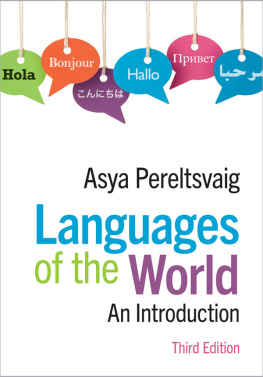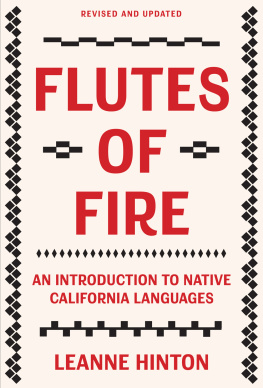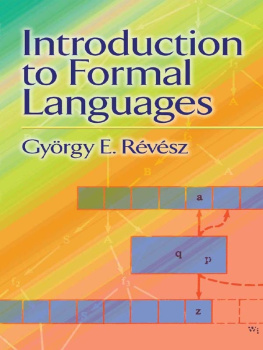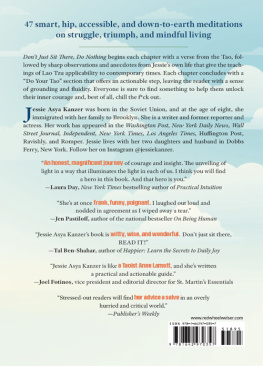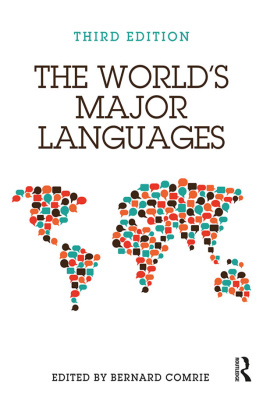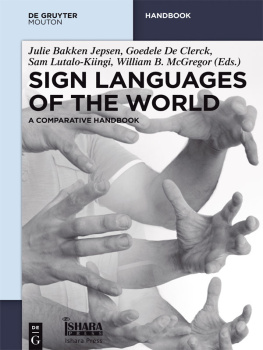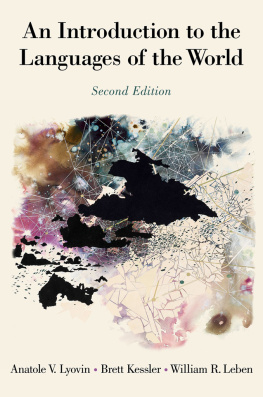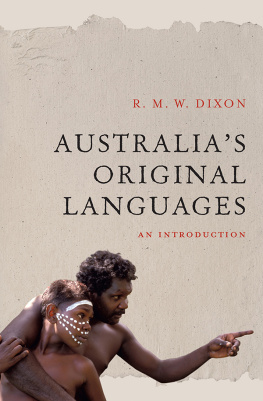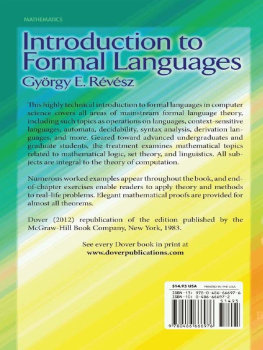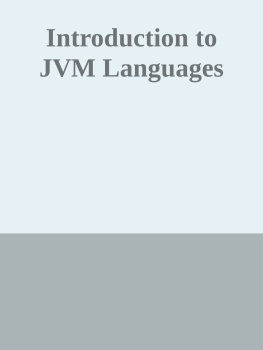Asya Pereltsvaig - Languages of the World: An Introduction
Here you can read online Asya Pereltsvaig - Languages of the World: An Introduction full text of the book (entire story) in english for free. Download pdf and epub, get meaning, cover and reviews about this ebook. year: 2021, publisher: Cambridge University Press, genre: Children. Description of the work, (preface) as well as reviews are available. Best literature library LitArk.com created for fans of good reading and offers a wide selection of genres:
Romance novel
Science fiction
Adventure
Detective
Science
History
Home and family
Prose
Art
Politics
Computer
Non-fiction
Religion
Business
Children
Humor
Choose a favorite category and find really read worthwhile books. Enjoy immersion in the world of imagination, feel the emotions of the characters or learn something new for yourself, make an fascinating discovery.
- Book:Languages of the World: An Introduction
- Author:
- Publisher:Cambridge University Press
- Genre:
- Year:2021
- Rating:3 / 5
- Favourites:Add to favourites
- Your mark:
- 60
- 1
- 2
- 3
- 4
- 5
Languages of the World: An Introduction: summary, description and annotation
We offer to read an annotation, description, summary or preface (depends on what the author of the book "Languages of the World: An Introduction" wrote himself). If you haven't found the necessary information about the book — write in the comments, we will try to find it.
Languages of the World: An Introduction — read online for free the complete book (whole text) full work
Below is the text of the book, divided by pages. System saving the place of the last page read, allows you to conveniently read the book "Languages of the World: An Introduction" online for free, without having to search again every time where you left off. Put a bookmark, and you can go to the page where you finished reading at any time.
Font size:
Interval:
Bookmark:
Languages of the World
Third Edition
Are you curious to know what all human languages have in common and in what ways they differ? Do you want to find out how language can be used to trace different peoples and their past? Then this book is for you! Now in its third edition, it guides beginners through the rich diversity of the worlds languages. It presupposes no background in linguistics, and introduces the reader to linguistic concepts with the help of problem sets, end-of-chapter exercises, and an extensive bibliography. Charts of language families provide geographical and genealogical information, and engaging sidebars with demographic, social, historical, and geographical facts help to contextualize and bring languages to life. This edition includes a fully updated glossary of all linguistic terms used, new problem sets, and a new section on cartography. Supplementary online materials include links to all websites mentioned and answers to the exercises for instructors.
ASYA PERELTSVAIG is a native speaker of Russian and a fluent speaker of three other languages. For the last fifteen years, she has taught courses in linguistics at Yale, Cornell, Stanford, and several other universities around the world. Her academic interests include languages, history, genetics, and the relationship between the three.
Languages of the World
An Introduction
Third Edition
Asya Pereltsvaig
Independent scholar


University Printing House, Cambridge CB2 8BS, United Kingdom
One Liberty Plaza, 20th Floor, New York, NY 10006, USA
477 Williamstown Road, Port Melbourne, VIC 3207, Australia
314321, 3rd Floor, Plot 3, Splendor Forum, Jasola District Centre, New Delhi 110025, India
79 Anson Road, #0604/06, Singapore 079906
Cambridge University Press is part of the University of Cambridge.
It furthers the Universitys mission by disseminating knowledge in the pursuit of education, learning and research at the highest international levels of excellence.
www.cambridge.org
Information on this title: www.cambridge.org/9781108479325
DOI: 10.1017/9781108783071
Asya Pereltsvaig 2012, 2017, 2021
This publication is in copyright. Subject to statutory exception and to the provisions of relevant collective licensing agreements, no reproduction of any part may take place without the written permission of Cambridge University Press.
First published 2012
Second edition published 2017
Third edition published 2021
Printed in the United Kingdom by TJ International Ltd, Padstow Cornwall, 2021
A catalogue record for this publication is available from the British Library.
ISBN 978-1-108-47932-5 Hardback
ISBN 978-1-108-74812-4 Paperback
Additional resources for this publication at www.cambridge.org/pereltsvaig3
Cambridge University Press has no responsibility for the persistence or accuracy of URLs for external or third-party internet websites referred to in this publication and does not guarantee that any content on such websites is, or will remain, accurate or appropriate.
To my parents, Freyda and Michael Pereltsvayg,
Ancient Greeks were among the first ones to make the observation still relevant today that languages differ from one another. Languages use different sounds to make up different words and combine words into phrases and sentences in very different ways. When I was growing up in Saint Petersburg, Russia, my family spoke Russian. In this language, the same word is used for house and home, while two different words describe what Russian speakers perceive as two different colors ( sinij and goluboj ), which English speakers group as blue. Russian has soft (palatalized) consonant s but lacks the English thsounds ( and , in a linguistic notation). English distinguishes a blue house from the blue house , while Russian has no counterpart to English articles a or the. Unlike English, Russian stacks all question words at the beginning of a sentence, as in Kto chto gde kogda kupil? (literally Who what where when bought?). The list goes on, and each language presents its own peculiar twists. Yet, as you will discover in this book, there are many ways in which languages are similar and use the same patterns in widely dispersed parts of the world.
This book combines geolinguistics (what languages are spoken where and by whom) with typology (in what ways languages differ and in what ways they are similar). It is organized geographically (you can see the breakdown of the world into chapters in ): as you travel through the worlds regions, you will learn not only what languages you might encounter there (this information is easily obtainable online) but how these languages are related to one another, what peculiarities they share, and what unique features they exhibit. You will also gain an appreciation of what is exotic in languages, not from the perspective of English alone, but from a more global point of view. You may even appreciate how exotic English itself is, when compared to other languages of the world.
While intended primarily as an undergraduate textbook, and complete with pedagogical features described below, this book can serve as an introduction to the world of language and the worlds languages for a general reader as well. No knowledge of linguistics or of any particular language (besides English, of course!) is presupposed, and all technical terminology is explained in the text and in the glossary at the end of the book. Numerous examples are included throughout the book to illustrate the linguistic phenomena being discussed, as are URLs of websites where you can hear the sounds of various languages, explore their grammatical properties, or investigate their geographical distribution. (The links are also posted on the accompanying website, hosted by Cambridge University Press.)
Whether or not you are using this book for a college class, I highly recommend that you roll up your sleeves and work through at least some of the Do It Yourself sections at the end of each chapter. Linguistics is a little like ballet: you cannot really learn it properly without doing it yourself. All the assignments included in this book are designed to be approachable and solvable! with just the information provided here or in the websites that are incorporated into specific assignments. (This third edition has been enriched by the addition of many new Do It Yourself problems. Answers to the problems are available for course instructors only.)
Each chapter also includes a number of features whose goal is to add interesting information, ease the reading, or keep you, the reader, on your toes. Each chapter opens with a short narrative introduction, which includes a textbox listing all the language families spoken in the region, with the numbers of chapters/sections where these languages are discussed. Each chapter includes one or more longer textboxes that cover tangential topics, like indigenous African writing systems and taboo languages, and several short Did you know? boxes that present tidbits and factoids about the material discussed in the main text. Each chapter also includes a Fascinating Language sidebar that provides a very brief overview of one of the corresponding regions languages. Some sections are partitioned from the rest of the text as Advanced; these segments, concerned with slightly more complicated phenomena, are meant to still be readable without any prerequisite knowledge, but you will not hurt my feelings if you decide to skip them. In addition to being updated and revised, this third edition includes several entirely new sections, including ones discussing sign languages, constructed languages, language maps, and more.
Font size:
Interval:
Bookmark:
Similar books «Languages of the World: An Introduction»
Look at similar books to Languages of the World: An Introduction. We have selected literature similar in name and meaning in the hope of providing readers with more options to find new, interesting, not yet read works.
Discussion, reviews of the book Languages of the World: An Introduction and just readers' own opinions. Leave your comments, write what you think about the work, its meaning or the main characters. Specify what exactly you liked and what you didn't like, and why you think so.

